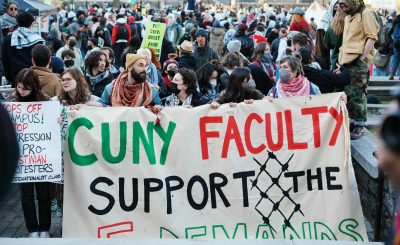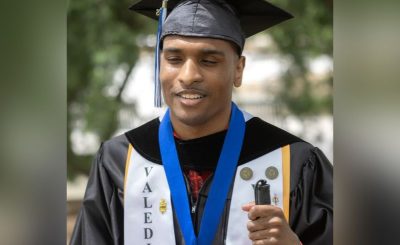by Gennaro Virtuoso
Five years ago, in March 2020, Queens became the epicenter of the COVID-19 outbreak. Elmhurst Hospital, for the first time in its history, made national headlines, as refrigerated trucks were brought in to store the bodies of deceased patients. The mental and physical toll it had on healthcare workers during this time was immense. An emergency room physician wrote an opinion piece for the New York Times, describing the chaotic conditions-patients lying in crowded hallways, strapped to oxygen, and many sedated and intubated. The physician described the overwhelming stress that frontline workers faced, noting the emotional exhaustion and the sense of helplessness that pervaded the hospital. The emotional scars of those months are still felt by healthcare workers across the country.
The Federal Government slashed 11.4 billion in COVID-19 relief funds that were initially set aside for local and state health department. These funds, intended for national distribution, were meant to aid pandemic response efforts, including testing, vaccination, and preparedness for future outbreaks. The Department of Health and Human Services (HHS) justifies the cuts by claiming the funds are no longer necessary, as the pandemic is considered “non-existent “by the administration. HHS stated that it will no longer “waste taxpayers dollars” and will focus instead on addressing what it calls the “chronic disease epidemic.” HHS secretary Robert F. Kennedy, Jr. also claimed that HHS’s previous efforts to help have not been effective.
As part of this plan, HHS Secretary Kennedy fired 10,000 employees, including scientists, doctors and senior staff. The cuts were part of an ongoing effort to reallocate resources to address non-communicable diseases, including diabetes, heart disease and obesity, which the administration claims are larger threats to public health than COVID. However, after widespread protests and public outcry, Kennedy announced a reversal, claiming it was a DOGE error (DOGE being the abbreviation for an unofficial “‘department’ of efficiency,” administrated by Elon Musk) and that 20% of the laid off- employees would be reinstated to the Lead Poisoning and Prevention and Surveillance Branch.
Politico reported on Friday that no such reinstatement is planned, and the administration made no further comments on the issue.
What are the risks of COVID today?
Despite the lack of a formal state of emergency, COVID continues to pose a threat. According to the CDC, 458 Americans had died from COVID the in the past four weeks. The CDC also notes that while the number of cases has decreased from the early peak of the pandemic, the virus remains a health risk, especially for immunocompromised individuals, the elderly, and those with underlying health conditions. The government’s closure of the website that provided free at home COVID tests, has sparked concerns about the future of public health. This cut in federal funding and reduced access to testing will likely exacerbate risks to most urban and overpopulated areas, leaving them more vulnerable to future pandemics and preventable diseases.
The effects of the cuts are already being felt in many communities. Experts warn that without a COVID response infrastructure in place, future outbreaks of variants or entirely new diseases could spread more rapidly. Public health officials have also expressed concern about how cuts to funding will impact the ongoing efforts to address long COVID, which has affected millions of Americans and left many with long-term health complications.
Dr. Mader, a professor of Anatomy and Physiology at QCC, explained that viral mutations are natural and that biologist view viruses “as rogue pieces of genetic material roaming the world looking for cells to infect.” When these predators seize on their prey, they attack the host and take over the cell. Dr. Mader stated that as a virus circulates, “the less virulent it becomes”, noting that viruses like COVID-19 may continue to mutate, and that vaccines are crucial because they train the immune system to recognize and fight specific strains of a virus.
Michael Loredent, a science major at QCC, was 13 years old when COVID hit and says that remote learning presented challenges that he overcame and graduated high school. He fears “a little bit, but not for now, as he feels the risk is lower now that vaccines are available.” Michael hopes that people take COVID more seriously to prevent future cases and deaths so it won’t be as severe as they were five years ago..
Peter Lewis, a healthcare worker at North Shore Mercy Hospital and student at QCC, initially feared COVID, but no longer worries about it much after having contracted the virus twice, once just last week. “I did everything right but still got it,” he explained, expressing his disappointment. Peter, who works at the hospital in a private doctor’s office, expressed concern and frustration because patients may think they present symptoms that they think are just allergies when in fact they have Covid. He feels that people in general have “let their guards down a lot,” including himself.
How do QCC students feel about vaccination?
Though mutations make it difficult to create a universal vaccine, vaccinations are the best defense against the virus, preventing a person from becoming sick over and over again, says Dr. Mader. Much like the flu, “Covid is with us forever.” Dr. Mader believes that a combined vaccine for covid and the flu is on the way.
Peter, the healthcare worker and QCC student, admits that he was a little apprehensive in the beginning to get the vaccination, but also draws an analogy to the flu. “It’s like getting the flu shot, it’s not that different,” says Peter.
Peter feels that the COVID vaccine will also come to resemble the flu vaccine in that it will become part of a patient’s annual or bi-annual check-up visit. He received the first booster in 2021, and got COVID in 2022, and then got the booster in 2023. He experienced very severe symptoms from the booster and feels because of this pattern it’s best to alternate years in which he receives a vaccine. “Maybe I will get the booster next year.” Peter said.
Michael, the QCC science major, emphasized the importance of self-care and personal hygiene to avoid another lockdown, which is why he just got vaccinated.
Other students, like Angelina, a QCC Education major, are less concerned about COVID. Angelina says she has a strong immune system and believes the virus in no longer as significant a threat. Though she was impacted by the lockdowns in high school, she remains optimistic about the future and hopes to return to a pre-pandemic lifestyle.
Dr. Naydu Carmona, Professor of Anatomy and Physiology at QCC, shared own her experience of teaching remotely during the pandemic. “It was difficult to make a true connection with the students,” she said. She recalls teaching a class and discussing “how the immune system works when it encounters a pathogen, an infectious agent.” Dr. Carmona says she “got a lot of pushback from the students”, because students had come to believe what they heard on some social media platforms, such as that vaccines cause autism and are harmful, causing long term negative consequences.”
Dr. Carmona was concerned, especially because her students were future healthcare workers, so she and her colleague, Dr. Monica Trujillo, a Microbiology Professor at QCC, decided to write an article as a call for action called “Developing Vaccine Literacy for Urban Health Sciences, the Future of the Workforce,” published in the Journal of Microbiology & Biology Education. She also created a “vaccine education module” to help students understand the science behind vaccines and the immune response. Dr. Carmona expressed concern over vaccine hesitancy, especially among future healthcare workers, and emphasized the importance of accurate information over misinformation spread on social media.
Both Dr. Carmona and Dr. Mader stressed the significance of understanding viruses and vaccines designed to protect against them. COVID is an RNA virus, and the vaccine targets the spike proteins of the virus. When the body encounters these proteins, it produces antibodies to fight off infection, which is why vaccines remain an essential tool in managing not only COVID 19 but all viruses.
Dr. Carmona also discussed the risks of preventable diseases like the measles, highlighting the importance of vaccination. Measles, which had nearly been eradicated in the U. S. before the anti-vaccine movement gained traction, has made a troubling comeback recently.
What does this mean for other vaccines?
In related news, despite his stance on vaccine mandates and support of the anti-vaccine movement, Kennedy, who recently stated that he “would go wild with healthcare ,“has endorsed the MMR (Measles, Mumps, and Rubella) vaccine, instructing the CDC to supply pharmacies and clinics in Texas with MMR vaccines and other necessary medical supplies. Experts agree that widespread vaccination is crucial for preventing outbreaks like measles, which has seen a surge recently due to vaccine hesitancy. According to Dr. Paul Offit, director of Vaccine Education Center at the Children’s Hospital of Philadelphia, a single dose of the MMR vaccine is about 93% effective at preventing illness, with a second dose bringing the effectiveness to 97%.



